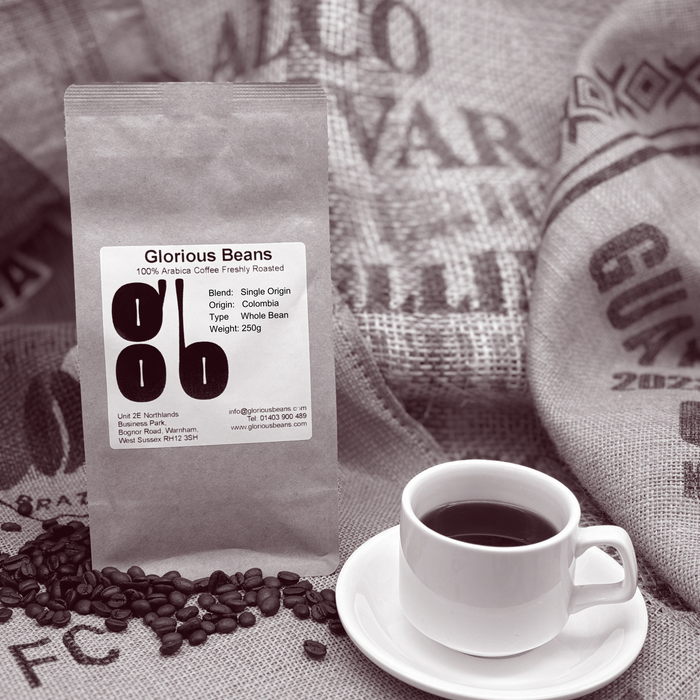SOE Single Origin Espresso – A Great Gift for Coffee Aficionados
SOE Single Origin Espresso – A Great Gift for Coffee Aficionados
Blog Article
Understanding Coffee Beans: the Journey From Espresso to Blended Coffee Beans

The Beginnings of Coffee: A Worldwide Viewpoint
While you could believe of coffee as a modern staple, its beginnings trace back centuries, linking with cultures across the world. The tale begins in Ethiopia, where legend states a goat herdsman called Kaldi discovered the energizing impacts of coffee beans after seeing his goats romping energetically after eating them.
As profession courses increased, coffee made its way to Europe in the 17th century, promptly getting appeal. It changed from a magical beverage right into a daily ritual, intellectual exchanges and motivating events. Each society included its one-of-a-kind spin to coffee prep work, enriching its history. This global journey highlights how coffee connects us, transcending borders and uniting diverse traditions through an easy bean.
Farming and Harvesting of Coffee Beans
As coffee's journey developed, the focus shifted to the cultivation and harvesting of specific bean varieties, specifically those made use of for coffee. You'll discover that espresso beans typically come from Arabica or Robusta plants, each offering distinct tastes. The excellent expanding problems include high altitudes and abundant, well-drained soil, which enhance the beans' quality.
Throughout the harvest, choosing methods differ. Timing is important; you want to collect when the cherries reach peak perfection for maximum taste.
When harvested, the beans are planned for processing, which is essential in establishing their final preference. Comprehending the farming and gathering procedures provides you understanding into what goes right into your favorite coffee, enriching your admiration for each mug.
Processing Techniques: From Cherry to Bean
Since you've found out about collecting espresso beans, let's discover how those cherries transform right into the coffee beans you love. You'll see exactly how various harvesting techniques effect taste, followed by the necessary steps of fermentation and drying. We'll break down the milling and grading process that establishes your coffee's top quality.
Harvesting Methods Clarified
When it comes to coffee, recognizing harvesting strategies is crucial, given that they straight affect the flavor and high quality of the beans you delight in. Careful picking involves hand-picking just ripe cherries, guaranteeing you obtain the finest quality beans. Ultimately, the selection of gathering method can significantly influence your coffee experience, so it's worth recognizing just how those beans made it to your cup.
Fermentation and Drying
After collecting, the following steps in processing coffee beans play a substantial function fit their flavor. You'll locate that fermentation is crucial, as it helps damage down the mucilage bordering the beans, improving their taste account. Depending upon the approach, this procedure can last from a few hours to numerous days, with varying results based upon temperature and moisture.
Sun-drying enables the beans to soak up flavors from the atmosphere, while mechanical drying out assurances regular moisture levels no matter of weather. Correct drying is necessary to prevent mold and maintain the beans' quality, eventually affecting your cup of coffee.
Milling and Grading Process
As fermentation and drying set the phase for taste development, the milling and grading procedure warranties that only the finest coffee beans make it to your mug. This phase involves eliminating the external layers of the coffee cherry, consisting of the parchment and husk. After milling, the beans are sorted by size and weight, making sure a consistent top quality. You'll find that grading assists determine issues and categorize beans, which affects flavor and scent. High-quality beans receive a higher grade, leading to a richer coffee experience. When rated, the beans await packaging and shipping, preserving their distinct attributes. This careful procedure is crucial for delivering the extraordinary preference you appreciate in every sip of your preferred mixture.
Toasting Methods: Unlocking Flavor Potential
When you roast coffee beans, the method you choose can considerably affect the taste account. Recognizing the relationship in between time, temperature, and roasting methods is essential to disclosing the possibility of your brew. Let's explore how these elements collaborated to develop the excellent mug.
Roasting Methods Clarified
While you may assume that all coffee roasting techniques yield the exact same outcomes, the truth is that each method discloses distinct taste possibilities in the beans. Drum roasting utilizes a revolving drum to evenly disperse warmth, enhancing caramelization and creating a well balanced taste. Air roasting, on the other hand, distributes warm air around the beans, advertising a lighter roast with pronounced acidity.

Influence on Flavor Account
Various roasting techniques not only influence the process however additionally substantially impact the flavor account of the coffee beans. When you pick a light roast, you'll experience bright level of acidity and floral notes, showcasing the bean's origin. In comparison, a tool roast equilibriums acidity with sweetness, frequently disclosing chocolatey touches. Dark roasts, on the other hand, bring out strong, great smoky tastes, sometimes concealing the bean's special features. Each technique reveals different oils and substances, resulting in a wide variety of tastes. By trying out with various roasting designs, you can discover which profiles resonate with your palate. Comprehending these nuances helps you appreciate the artistry behind your cup SOE of coffee, enhancing your overall experience with every sip.
Time and Temperature Factors
To launch the complete taste capacity of coffee beans, both time and temperature during the toasting process play significant roles. When toasting, you'll discover that higher temperature levels can promptly establish flavors, yet if you hurry it, you may end up with burnt notes. Alternatively, lower temperatures enable a more progressive flavor development, showcasing the beans' distinct characteristics.

Timing is simply as essential; prolonging the roast as well long can cause a loss of acidity and illumination, while also short a roast may leave the beans underdeveloped. Finding that pleasant area calls for practice and trial and error. By adjusting these aspects, you can reveal the abundant, complicated tastes concealed within each bean, creating a genuinely remarkable coffee experience.
The Art of Blending: Crafting One-of-a-kind Coffee Profiles

Beginning by picking a base coffee that gives a strong structure. A bright Ethiopian bean can bring fruitiness, while a rich Brazilian coffee includes body.
As you mix, remember that each combination narrates. You're not simply making coffee; you're creating an experience. So, take your time, taste frequently, and appreciate the journey of discovering your signature blend.
Brewing Methods: How Prep Work Impacts Flavor
Mixing coffee opens a domain of flavor opportunities, but just how you brew that mix can considerably affect your last cup. Various brewing approaches remove one-of-a-kind flavors and aromas, so it's essential to pick sensibly. A French press permits debris and oils to remain, developing a rich, robust experience. On the other hand, a pour-over highlights the coffee's clarity and illumination, ideal for showcasing fragile notes.
Coffee, with its high pressure, creates a concentrated shot that highlights sweetness and crema. If you like a lighter brew, take into consideration a chilly mixture technique; it produces a smooth, less acidic preference.
Ultimately, testing is vital. Readjusting variables like water temperature level, grind dimension, and make time can transform your coffee's profile. So, welcome the art of brewing to find the tastes hidden in your coffee blends. The right approach can elevate your experience to new elevations.
The Future of Coffee: Sustainability and Advancement
As the coffee sector evolves, sustainability and advancement are coming to be important for attending to environmental challenges and meeting consumer needs. You'll see that more coffee companies are taking on environment-friendly methods, from sourcing beans morally to executing sustainable farming methods. These shifts not just help the earth yet additionally enhance the top quality of the coffee you enjoy.
You might see developments like eco-friendly product packaging and water-saving developing approaches that decrease waste. Advanced technology, such as blockchain, is likewise ending up being prominent, guaranteeing openness in the supply chain, which enables you to map your coffee back to its origins.
Additionally, buying local communities and sustaining farmers through reasonable profession efforts promotes a much more lasting coffee community. As you drink your next cup, remember that your choices can add to a brighter future for coffee. By going with sustainable brand names, you're not simply taking pleasure in a drink; you're making a positive impact on the globe.
Frequently Asked Inquiries
What Is the Distinction Between Arabica and Robusta Beans?
Arabica beans are smoother, sweeter, and have a greater acidity, while robusta beans are stronger, much more bitter, and include more high levels of caffeine. When brewing your coffee., you'll see these distinctions in flavor and fragrance.
Exactly How Does Altitude Affect Coffee Bean Flavor?
Altitude effects coffee bean flavor significantly. Greater altitudes generate beans with brighter acidity and facility flavors, while reduced elevations usually produce beans that are heavier and much less nuanced. You'll notice these differences in your cup!
What Are the Wellness Benefits of Drinking Coffee?
Drinking coffee can increase your power, boost mental focus, and also boost physical performance. It's rich in antioxidants, may decrease the danger of specific diseases, and can advertise a healthier metabolic process when consumed in moderation.
Can Coffee Beans Be Reused for Brewing?
Yes, you can recycle coffee beans for brewing, but the flavor could be weak. If you enjoy trying out, try reusing them in different methods, like cool mixtures or including in smoothie mixes for an additional kick.
How Should I Store Coffee Beans for Freshness?
To maintain your coffee beans fresh, store them in a closed container in an amazing, dark location. Prevent revealing them to wetness, light, or warm, as these factors can rapidly deteriorate their taste and fragrance.
Recognizing Coffee Beans: the Journey From Espresso to Blended Coffee Beans.
Currently that you've discovered concerning collecting espresso beans, allow's check out how those cherries change right into the coffee beans you love.When you roast coffee beans, the method you choose can dramatically influence the flavor account - Single Origin Espresso.While you might think that all coffee roasting techniques generate the same outcomes, the truth is that each technique discloses unique taste possibilities in the beans.Different roasting techniques not only affect the procedure yet additionally greatly affect the taste account of the coffee beans
Report this page